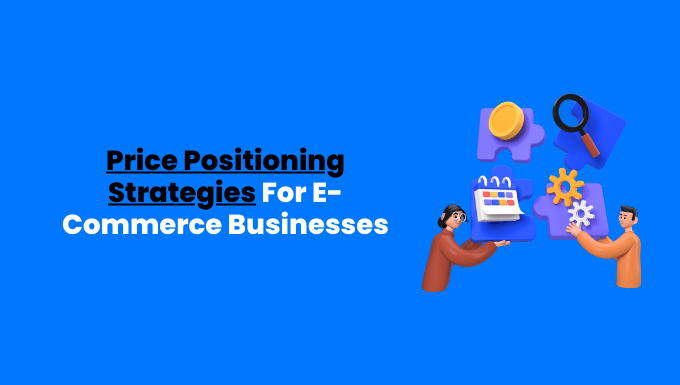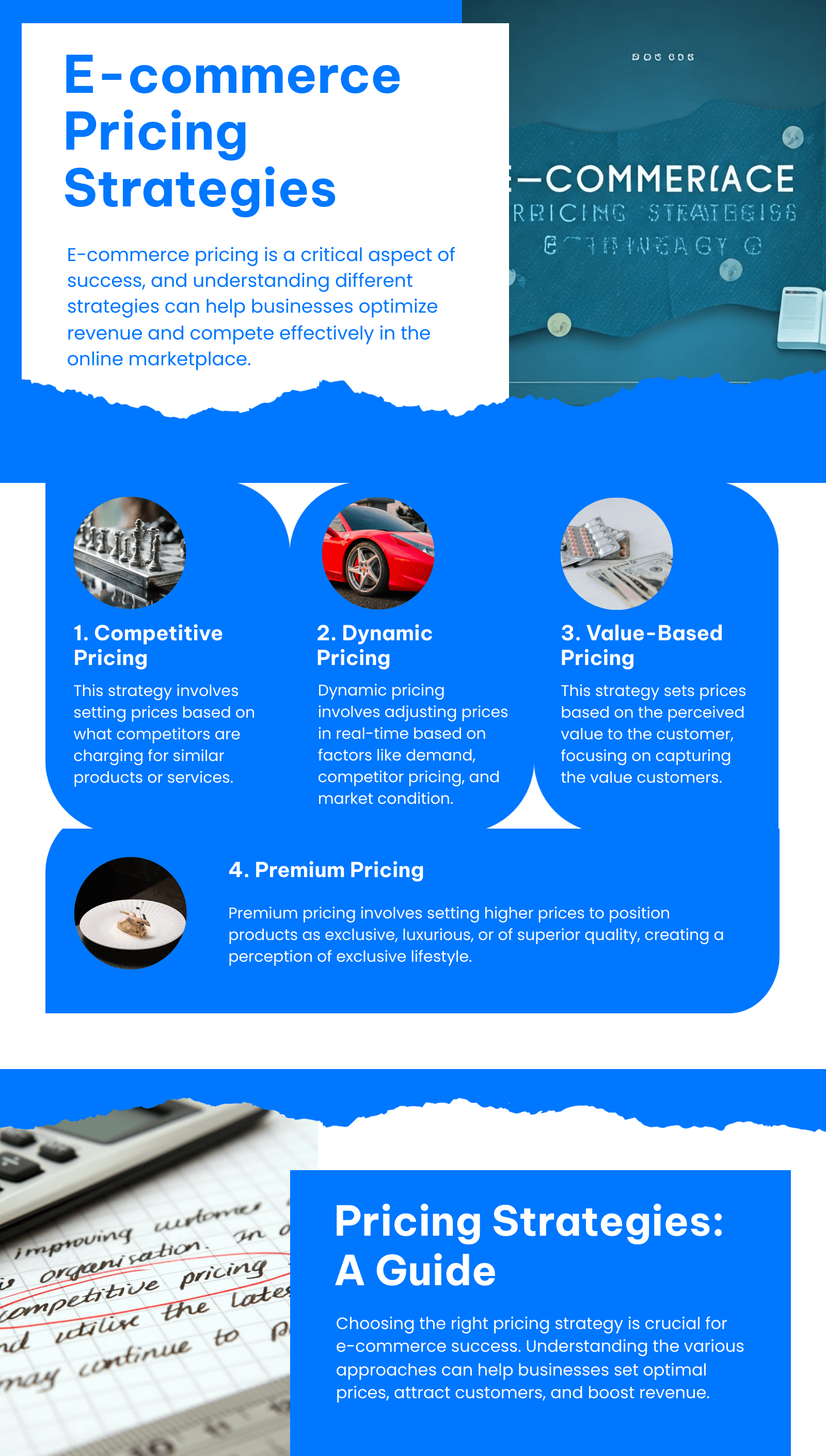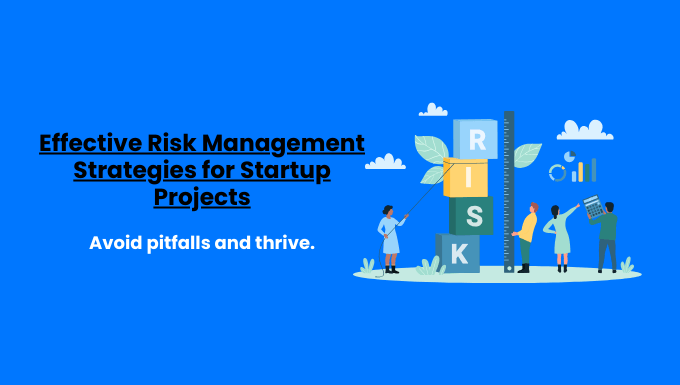Are your e-commerce prices leaving money on the table?
E-commerce price positioning strategies can make or break your online business.
Discover how to maximize profits and outmaneuver competitors with smart pricing tactics.
Dive into the top 5 e-commerce price positioning strategies that will transform your online store’s success.
Key Takeaways:
- Competitive pricing helps attract price-sensitive customers and gain market share.
- Dynamic pricing optimizes revenue by adjusting prices in real-time based on demand.
- Value-based pricing captures the perceived worth customers place on your products.
- Premium pricing positions products as exclusive or luxurious to justify higher prices.
- Effective price positioning requires clear objectives, leveraging technology, and continuous testing.

Contents
ToggleImportance of Pricing in E-commerce
Setting the right price transcends mere profitability; it involves comprehending the target market, delivering value to customers, and maintaining competitiveness in a saturated online market.
The following points underscore the significance of pricing in e-commerce, including best practices like cost-plus pricing and bundle pricing.
Understanding these pricing strategies can help businesses better price their products in a highly competitive online marketplace.
- Influences Consumer Behavior: The price of a product can profoundly impact how consumers perceive its value. Strategic pricing not only attracts customers but also drives sales, fosters brand loyalty in e-commerce businesses, and improves average order value.
- Differentiates Your Brand: Pricing serves as a primary tool for setting your brand apart from competitors and determining the best pricing strategy to use. Whether positioning your products as premium, budget-friendly, or value-driven, your pricing strategy, including the choice of psychological pricing or loss leader pricing, shapes how customers perceive your business.
Impact on Sales and Profitability
Research by McKinsey reveals that pricing optimization can boost a company’s return on sales by 2-4%, underscoring the substantial effect of effective price positioning on the bottom line.
By tactically aligning prices with market demand, competition, and customer perception, businesses can enhance sales and profitability significantly.
Popular E-commerce Price Positioning Strategies

1. Competitive Pricing Strategies
Competitive pricing involves setting prices based on what competitors are charging for similar products or services in the e-commerce space.
It is a strategy commonly used to attract price-sensitive customers and gain a competitive edge in the market.
Examples and Case Studies: Including analyses of how discounted price offers have successfully increased sales volumes.
- Walmart’s everyday prices strategy is a classic example of competitive pricing that focuses on offering the lowest prices in the market to drive sales volume and introduce loss-leader pricing for strategic products.
- Southwest Airlines‘ pricing strategy is based on matching or undercutting competitors’ fares to attract budget-conscious travelers.
Case Study: Analyzing the initial price strategy and its adjustments to meet market demands.
Amazon is known for dynamically adjusting prices based on competitor pricing, demand fluctuations, and other market variables to stay competitive and maximize profits.
This strategy exemplifies how effective pricing strategies are crucial for e-commerce success.
Steps to analyze competitor pricing in the context of e-commerce:
- Identify key competitors in your industry.
- Compare their pricing strategies and positioning to understand the significance of anchor price in competition-based pricing.
- Adjust your prices accordingly to remain competitive.
Tools for competitive pricing analysis: Essential for monitoring how competitors price products and determining your own pricing strategy accordingly.
2. Dynamic Pricing Strategies
Dynamic pricing involves adjusting prices in real-time based on demand, competitor pricing, and other market factors. This approach allows companies to effectively compete on price and adapt to market changes swiftly.
This strategy allows businesses to optimize revenue by responding to changing market conditions swiftly.
Examples and Case Studies:
- Airlines frequently adjust ticket prices based on demand, seat availability, and booking trends to maximize revenue.
- Uber implements surge pricing during peak hours or high demand periods to balance supply and demand effectively, a prime example of dynamic pricing to adjust the selling price in real-time.
Case Study: Uber utilizes sophisticated algorithms to increase prices during peak demand, ensuring that there are enough drivers available to meet the increased requests while maximizing profits.
How to use dynamic pricing software to dynamically determine the price for your products based on market demand and competition.
- Select a dynamic pricing tool that aligns with your business needs.
- Configure pricing rules based on real-time data and market conditions.
3. Value-Based Pricing Strategies
Value-based pricing sets prices based on the perceived value to the customer rather than solely on production costs.
This strategy focuses on capturing the value that customers place on a product or service.
Examples and Case Studies:
- Apple prices its products higher than competitors due to the perceived value of its brand, quality, and innovation, employing a price skimming strategy in the e-commerce sector.
- Starbucks charges premium prices for its coffee based on the overall experience it offers customers beyond just the beverage itself.
Case Study: Apple’s premium pricing strategy is driven by brand loyalty, perceived quality, and a reputation for cutting-edge innovation that justifies the higher price points of its products.
4. Premium Pricing Strategies
Premium pricing involves setting higher prices to position products as exclusive, luxurious, or of superior quality, highlighting the strategic decision to set a price that reflects the perceived value.
This strategy is often employed to create a perception of exclusivity and premium value among customers, resembling price skimming strategies in e-commerce.
Examples and Case Studies:
- Rolex prices its watches at a premium to convey luxury, craftsmanship, and exclusivity in the luxury watch market.
- Tesla’s premium pricing for electric vehicles reflects the brand’s commitment to innovation, sustainability, and high-quality engineering.
Case Study: Rolex justifies its high prices by emphasizing superior craftsmanship, heritage, and exclusivity, making its timepieces highly desirable to affluent consumers.
Key Factors Influencing Price Positioning
1. Market Demand and Trends
Understanding market demand is essential for developing a successful pricing strategy.
By analyzing market demand, businesses can pinpoint the optimal price point for their products or services, ensuring the price of the product is based on current trends and customer willingness to pay.
It’s crucial to keep a close watch on consumer behavior shifts, economic indicators, and industry trends that may impact pricing decisions.
2. Competitor Analysis
Analyzing competitors’ pricing strategies is a key element in shaping your own e-commerce pricing strategy. By studying how competitors position their prices, businesses can gain valuable insights into setting competitive prices in e-commerce.
Tools like price tracking software, market research reports, and competitive benchmarking can provide valuable data to help you stay ahead in the market and set a competitive price for your products.
This helps ensure your pricing strategies are not setting the price of your products too high compared to the average price in the market.
3. Cost Structures and Margins
Understanding your cost structure is fundamental to establishing pricing strategies, such as cost-based pricing, that ensure profitability by accurately calculating the selling price, also taking into account the original price and discounted price.
Businesses need to consider all costs involved in producing and delivering their offerings, such as raw materials, labor, overhead, marketing expenses, and the use of a type of pricing strategy to optimize their price products effectively.
By factoring in costs and desired profit margins, companies can determine pricing that is both competitive and sustainable.
Implementing Effective Price Positioning Strategies
When it comes to pricing your products or services, strategic positioning can significantly impact the success of your business.
Let’s explore some essential strategies to assist you in setting the right price for your offerings and maximizing your profits.
1. Setting Clear Objectives
Before delving into pricing strategies, it’s essential to define your pricing goals and align them with your overall business objectives.
Here’s how you can do it:
- Defining Pricing Goals: Understanding the importance of setting an initial price that optimizes profits while considering the best pricing strategy and price sensitivity. Determine whether your objective is to increase market share, maximize profits, or establish your brand as a premium option.
- Aligning Pricing Strategy with Business Objectives: Understanding how different pricing strategies, such as psychological pricing or cost-based pricing, play a crucial role in achieving these objectives. Ensure that your pricing strategy is in sync with your broader business goals to drive growth and sustainability. It’s important to remember that effective pricing strategies are key to maintaining a strong market position.
2. Leveraging Technology and Tools
In today’s digital age, technology plays a crucial role in helping businesses optimize their pricing strategies.
Here are some tools and techniques you can use:
- Pricing Software and Analytics Tools: Utilize pricing software and analytics tools to gather data, analyze market trends, and make informed pricing decisions.
- Automation in Price Optimization: Utilizing AI for advanced price monitoring and adjusting products at lower price points or anchor prices automatically showcases how advanced technology is enabling more effective pricing strategies in today’s market. Implement automation tools to streamline your pricing processes and react promptly to market changes for better competitiveness.
3. Testing and Optimization
Continuous testing and optimization are key to refining your pricing strategy and achieving optimal results.
Here’s how you can do it effectively: Ensure the price tag on your products accurately reflects the value and is aligned with customer price sensitivity.
- A/B Testing for Pricing Strategies in E-commerce: Conduct A/B tests to compare different pricing approaches and identify which resonates best with your target audience.
- Continuous Optimization for Better Results: Regularly analyze your pricing performance, gather customer feedback, and make adjustments to enhance your pricing strategy over time.
Common Mistakes to Avoid in Price Positioning
When it comes to pricing your products or services, getting it right is crucial for the success of your business.
Many entrepreneurs often fall into common traps when it comes to price positioning that can have a significant impact on their bottom line.
Let’s explore some of these pitfalls and learn how to steer clear of them.
Underpricing or Overpricing
One of the most prevalent mistakes in price positioning is either underpricing or overpricing your offerings.
Let’s delve deeper into the risks associated with each pricing strategy, including psychological pricing and loss leader pricing strategy, which directly affect price sensitivity and can influence how effective a pricing strategy works in practice.
Risks of Underpricing:
- Undervaluing your products or services can diminish their perceived worth among customers.
- It may attract price-sensitive customers who are less loyal and may switch to competitors offering lower prices.
- Underpricing can lead to reduced profit margins, making it challenging to sustain and expand your business.
Risks of Overpricing:
- Setting prices too high can deter potential customers who perceive the value to be lower than the price.
- It may result in slower sales and longer inventory turnover, impacting cash flow.
- Overpricing can harm your brand reputation and hinder your ability to compete effectively in the market, underscoring the importance of a well-considered strategy to determine the price for your products.
Ignoring Market Dynamics
Another common mistake in price positioning is neglecting market dynamics and failing to adjust your pricing strategies, like cost-based pricing or psychological pricing, accordingly, to maintain a competitive edge and offer a product at a lower price when necessary.
Markets are constantly evolving, and staying abreast of the latest e-commerce pricing trends, including competition-based pricing, is vital for success.
This also includes understanding the average price level within the market.
Here’s why:
Importance of Staying Updated with Market Trends:
- Changes in consumer preferences, competitor pricing, and economic conditions can influence the perceived value of your offerings.
- Adapting your pricing strategies based on market dynamics can help you remain competitive and relevant in the industry.
- By monitoring market trends, you can spot opportunities for innovation and differentiation, enabling you to effectively position your prices.
Future Trends in E-commerce Price Positioning
In the rapidly changing world of e-commerce, keeping up with pricing trends is essential for businesses to thrive.
Let’s explore some exciting future trends that are influencing how companies set their prices to attract and retain customers, including the adoption of dynamic and psychological pricing strategies.
These trends highlight the importance of companies being able to price their products effectively to stay ahead.
AI and Machine Learning in Pricing
Artificial Intelligence (AI) and Machine Learning are transforming the landscape of pricing strategies. By analyzing extensive data sets and consumer behavior patterns, AI can assist companies in dynamically optimizing their prices for maximum profitability.
Role of AI in price optimization: AI can support businesses in identifying effective pricing strategies, helping to analyze how competitive their prices are in relation to market position and customer expectations.
- AI algorithms can analyze real-time market data, competitor pricing, and customer preferences to recommend optimal price points, ensuring that the pricing doesn’t lead to lost sales or reduced market position.
- By automating pricing decisions, AI allows businesses to respond quickly to market fluctuations and maximize their revenue.
Future prospects of AI-driven pricing:
- A study by McKinsey suggests that AI-powered dynamic pricing, an advanced type of pricing strategy, could boost a company’s operating profit by 9% and revenue by 7%.
- Retail giants like Amazon have already utilized AI to adjust prices in real-time, demonstrating the potential of AI in pricing strategies, including the application of charm pricing.
Personalized Pricing
Another emerging trend in e-commerce pricing is personalized pricing, where companies tailor prices for individual customers based on factors such as purchase history, browsing behavior, and demographics.
Customizing prices for individual customers: This involves sophisticated strategies like dynamic pricing to set a price that maximizes profitability while catering to customer demand.
- By adjusting prices to align with each customer’s willingness to pay, businesses can foster customer loyalty and drive sales.
- Airlines frequently employ personalized pricing, offering varying fares to customers based on factors like booking timing and past purchases, effectively using fluctuating product prices to maximize revenue.
Benefits: Utilizing strategies that consider price sensitivity can significantly enhance profitability.
- Enhanced customer satisfaction and loyalty as prices cater to individual preferences.
- Improved conversion rates and revenue through targeted pricing strategies.
Challenges:
- Potential customer backlash due to perceptions of unfairness or discrimination in personalized pricing can also reflect on price sensitivity and the original price set by retailers.
- Implementation complexities in e-commerce businesses, including data privacy concerns and the accuracy of algorithms in determining the best price.
People Also Asked
1. What is Price Positioning in E-commerce?
In the realm of e-commerce, price positioning is a critical factor in shaping how your product or service is perceived by customers and how it stands out in the market, often involving strategies such as competition-based pricing to enhance perception.
Here’s a closer look at what price positioning entails: Including considerations for original price, discounted price, and how charm pricing can be an effective tactic.
- Definition: Understanding the role of penetration pricing, bundle pricing, and psychological pricing in e-commerce to strategically set the price for your products. Price positioning involves strategically setting the price of your product in relation to your competitors. It’s about finding that sweet spot that reflects the value of your offering while also remaining competitive in the market.
- Purpose: The primary objective of price positioning is to influence consumer behavior, establish the perceived value of your product, and ultimately gain a competitive edge in the market.
- Types: Price positioning can be categorized into high-end pricing (premium), mid-range pricing, and low-end pricing (economy), depending on where you want your product to be positioned in the market landscape.
2. How Does Competitive Pricing Work?
Competitive pricing is a savvy strategy that involves closely monitoring your competitors’ pricing strategies and adjusting your prices accordingly.
Here’s a breakdown of how competitive pricing operates:
- Concept: Competitive pricing revolves around setting your prices based on the prevailing rates of similar products in the market.
- Strategies: When implementing competitive pricing, you can utilize several key strategies:
- Price Matching: Aligning your prices with your competitors to stay competitive in the market.
- Price Undercutting: Offering lower prices than your competitors to attract price-sensitive customers.
- Price Over: Pricing your product higher to convey superior quality or unique features.
- Implementation: Regularly monitoring your competitors’ pricing and making necessary adjustments to your pricing strategy can help you maintain competitiveness in the market.
3. What are the Benefits of Dynamic Pricing?
Dynamic pricing is a game-changer in e-commerce, allowing businesses to adjust prices in real-time based on various market factors.
Here’s why dynamic pricing is a strategy worth exploring in e-commerce pricing strategies:
- Revenue Optimization: By tweaking prices in response to demand, competition, and other market conditions, dynamic pricing can help you maximize your revenue potential.
- Inventory Management: Incorporating price product strategies to ensure optimal stock levels while maintaining a fair price for profitability. Dynamic pricing enables you to clear out slow-moving inventory by lowering prices and maximize profits on high-demand items by increasing prices.
- Customer Segmentation: Tailoring your e-commerce pricing strategies to different customer segments based on their purchasing behavior and willingness to pay can help you attract a diverse range of customers.
4. How Can I Measure the Success of My Pricing Strategy?
Evaluating the effectiveness of your pricing strategy is crucial for making informed decisions and refining your approach, especially in sectors where e-commerce pricing strategies are continuously evolving.
Here are some key metrics to consider:
- Gross Profit Margin: This metric gauges your overall profitability by measuring the difference between sales and the cost of goods sold, essentially helping you to determine the most effective selling price for your products.
- Conversion Rate: The percentage of visitors who make a purchase can provide insights into how well your pricing strategy resonates with customers.
- Customer Lifetime Value (CLV): Predicting the total revenue a customer will generate over their relationship with your business can help you assess the long-term impact of your pricing strategy.
- Price Elasticity: Understanding how sensitive your customers are to price changes can guide you in making pricing adjustments. This insight is crucial for businesses that aim to compete on price while maintaining profitability.
- Sales Volume: Understanding the impact of e-commerce pricing strategies on sales volume is crucial, particularly strategies that leverage the initial price and discounted price to influence buyer behavior. Tracking the number of units sold can indicate how effective your pricing strategy is in driving sales.
- Market Share: Monitoring your sales relative to total market sales can give you a sense of your competitive position in the market and highlight the importance of price monitoring in understanding market dynamics, especially in regard to price sensitivity.
5. What is Value-Based Pricing?
Value-based pricing is a strategic approach that centers on setting prices based on the perceived value of your product to customers, ensuring that the pricing strategy works by aligning prices with customer expectations.
Here’s how you can implement value-based pricing effectively:
- Customer Perception: Understanding how much customers are willing to pay based on the value they see in your product is crucial for setting the right price and achieving a fair price perception.
- Differentiation: Highlighting unique features and benefits that justify a higher price point can help position your product as a premium offering.
- Market Research: Determining the anchor price and understanding how much customers are willing to pay based on the value they see in your product is crucial for setting the right price. Gathering data through surveys, focus groups, and market analysis can provide valuable insights into customer perceptions and their willingness to pay for your product.







